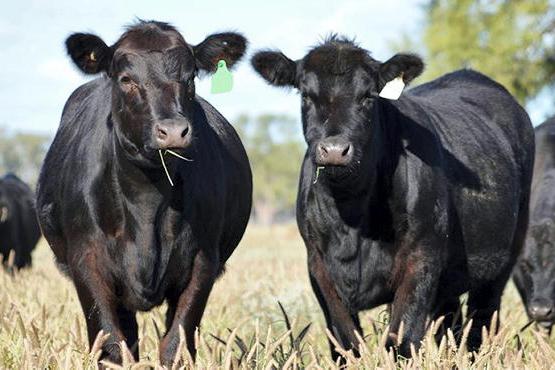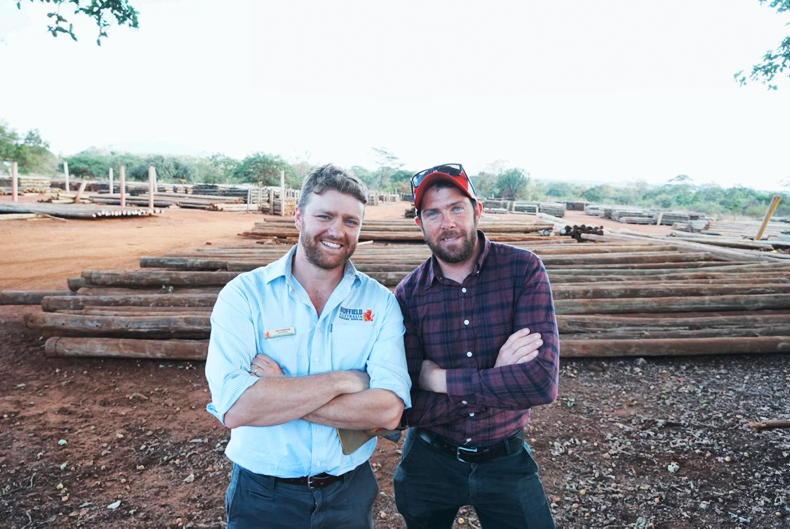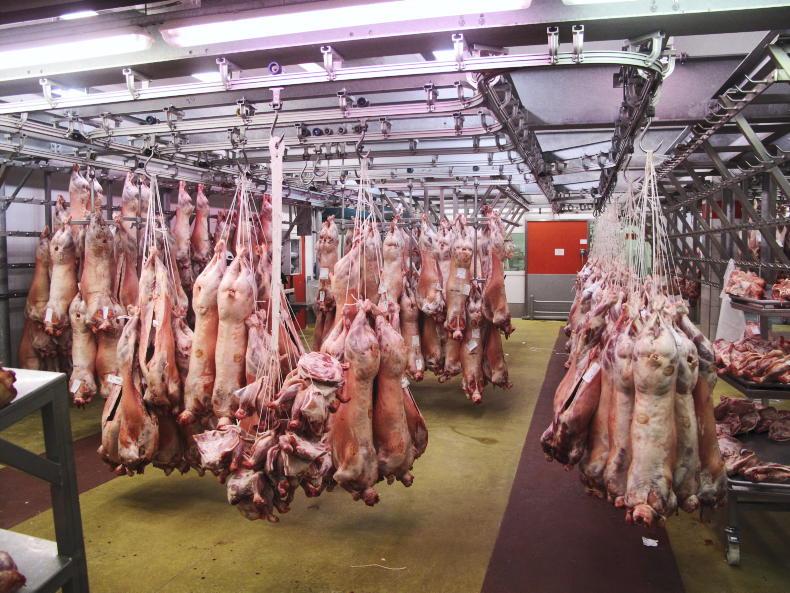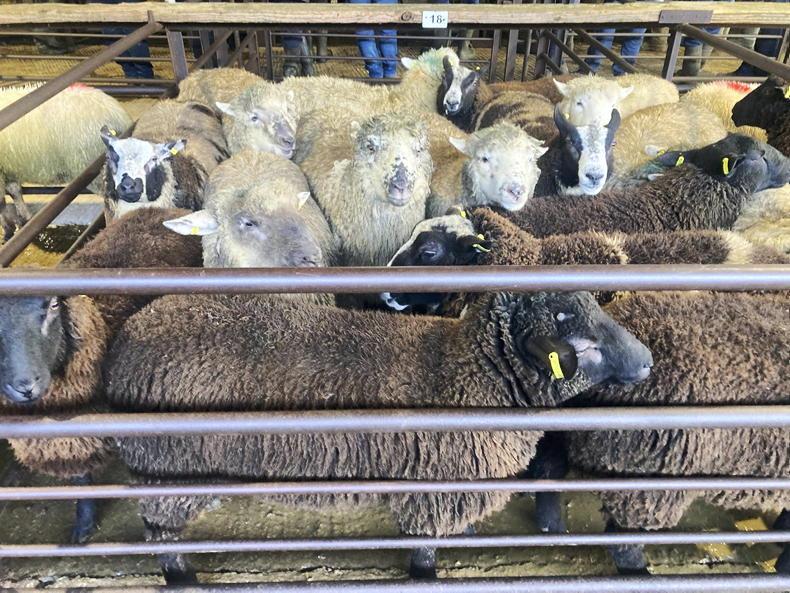The programme farmers have been using flock records, be it electronic data captured using EID packages or paper based, to make select flock replacements and compare the progeny performance of ewes and sires.
This provides a solid basis to make real progress on-farm in terms of increased output and more efficient use of inputs.
Breeding sales are now under way, but before deciding on what type of ram to buy, or if additional breeding females are required, it is worth stopping and looking back at lambing in spring.
A quick review should be based on what went well, what the main issues were and whether certain ewes had problems with body condition, lambing ease to certain rams and mothering ability.
Also, a review should include flock prolificacy. How many ewes went to the ram last year? How many scanned empty? What was the scanned lamb crop and how many lambs reached weaning or have been sold at the point of the year?
Gathering this data can be time-consuming, but it is paying off for the farmers. Table 1 and 2 outline the 2022 lambing results for the programme farmers and are split between lowland and upland flocks.
Clement Lynch,
Co Derry
Clement runs 580 ewes split between crossbred animals on upland ground and Lanark-type Scottish Blackface on the hill. All sheep lamb indoors and out of a potential 938 lamb births based on scanning results, there were 797 live lambs on the ground this spring.
All deaths are recorded, including physical deaths post-lambing as well as any losses in the gestation period.
Data is captured on an EID system and on reviewing flock records, there is no major area highlighted as a primary cause of mortality.
The losses that occurred included areas such as weak lambs at birth, a small number of watery mouth cases, some ewe deaths before lambing, hypothermia and stillbirths.
Clement has moved to purchasing flock sires with easy lambing traits using Estimated Breeding Values (EBV) as a means of increasing the number of live lambs reaching weaning stage.
Peter and Karol McCaughan,
Co Antrim
Peter and Karol run approximately 600 ewes consisting of crossbred and Lanark type animals. Fertility has been an issue limiting lamb numbers, but it is an area being addressed through OPA scanning, improved ewe condition and flock health.
Using EID records, Peter and Karol had 718 live lambs on-farm this year from a potential 823 births. There were a number of losses in the flock grazing the harder mountain related to weather and vermin, which cannot be avoided.
Unfortunately, there was an issue with abortion in the home flock. While nothing definite was confirmed by post-mortem, the leading suspicion is linked to listeriosis as ewes were vaccinated against enzootic abortion and toxoplasmosis.
James McCay,
Co Tyrone
James farms outside Drumquin, Co Tyrone, with his father John, with approximately 305 ewes equally split between crossbreds and horned ewes. Fertility has always been an issue in the horned ewes, with higher than acceptable barren rates. This is an area being addressed in the flock health plan.
Again, using EID records, there were 430 lambs on the ground from a potential 471 births. The majority of losses occurred in his crossbred ewes, which were carrying multiple lambs.
There was no main reason for lamb losses causing James any concern. Most losses related to stillborns, lamb vigour, ruptured navels and some ewe deaths pre-lambing. Records show there was no mortality linked to lambing difficulty following the purchase of a ram with EBVs for lambing ease.
Dermot McAleese,
Co Antrim
Dermot runs approximately 500 ewes split between 400 horned ewes and 100 crossbreds. Addressing body condition and ewe health has seen scanning percentage rise in recent years.
Flock records are paper-based, and for the 2022 lambing season, there were 720 live lambs on the ground out of a potential 773.
Losses stemmed from small weak lambs, vermin and weather issues on hill ground. The flock is vaccinated for abortion.
Paraic and Seamus McNeill, Co Down
Paraic and Seamus run 250 Texel, Suffolk and Belclare cross ewes. Belclare genetics were introduced recently to boost lamb numbers and will take a couple of years to bed in.
While slightly disappointed with their initial scanning percentage, out of a potential 320 lambs, Paraic and Seamus had 311 live lambs.
There were a few ewe deaths and a small number of lambs that were likely reabsorbed.
Other than this, there were no major areas of concern, as the farm has a rigorous health plan which is closely followed.
Trevor Nixon, Co Fermanagh
Trevor runs around 130 Belclare cross Suffolk ewes and out of a potential 270 lamb births, Trevor had 245 live lambs on the ground this year.
Triplets and surplus lambs were artificially reared, with some sold as pets.
However, due to the high number of ewes carrying multiple lambs, it is unavoidable that there were losses, caused by one small/weak lamb among healthy and vigorous lambs.
Trevor didn’t experience any other issues concerning lamb loss issues this year.
Roy and Marilyn Mayers, Co Fermanagh
Roy and Marilyn run approximately 230 ewes and 100 ewe lambs consisting of Texel, Suffolk and Belclare crosses. The Mayers purchase performance-recorded rams where possible and everything has been recorded using an EID package over the last three years.
Underperforming ewes have been removed from the flock and this year, out of a potential 585 lamb births, there were 515 live lambs.
Again, there were no major issues to cause alarm, but the influence of Belcare genetics has resulted in more losses with increased numbers of multiple births and smaller lambs.
Mark Davidson,
Co Tyrone
Mark runs approximately 320 crossbred sheep. Records were paper-based prior to 2021 but have since moved to EID.
Out of a potential 550 lambs, Mark had 512 live lambs on the ground in spring, despite his lambing policy being no assistance given between 11pm and 5am.
This system has worked successfully for many years, with losses during the night similar to those during the day.
Some of the areas where losses occurred included stillborns, most likely caused by knocks in group pens once ewes were housed.
Some lambs died from watery mouth and there were some losses from ewes lying on lambs.
Kate Kingan and Peter Mant, Co Armagh
Kate Kingan and Peter Mant run crossbred ewes, as well as some Dorsets, Suffolks and New Zealand Romneys. The crossbred sheep were lambed indoors, mainly on straw bedding, with the majority of the Romney ewes lambed outside in 2022 to save on labour.
Last autumn, 424 ewes and 121 ewe lambs were put to the ram and out of a potential 971 lamb births, the farm had 782 live lambs on the ground.
Losses were down to ewe deaths as a result of prolapse, meningitis and pre-lambing.
A small number of lambs were lost due to watery mouth, which is an area being worked on.
Other unaccounted for losses occurred from lambing outdoors through predation and ability to give assistance.
Looking back through the lambing data over a couple of years shows that there are some areas that need to be addressed. On the programme farms, lamb numbers increased after using EBV-recorded rams for lambing ease.
Vaccinating for enzootic abortion and toxoplasmosis have also helped, as has introducing some hybrid vigour in hill ewes through crossbreeding.
Equally, the results show that a high scanning percentage should be kept in context. The introduction of Belcare genetics to increase lamb numbers is having the desired effect.
As scanning rate approaches 200% and above, the number of ewes with multiple lambs increases, particularly triplets. These lambs have smaller birth weights and vigour at birth is sometimes an issue.
This is evident from some of the lowland flocks, where the leading cause of lamb loss is down to smaller lambs from multiple births. This shows that while a good scanning result is important, there must be a balance between scanning and getting live lambs on the ground that carries through to weaning or sale.
Read more
Proposal to pay farmers €5,000 to cull cows
What emissions reduction targets mean for Irish agriculture
The programme farmers have been using flock records, be it electronic data captured using EID packages or paper based, to make select flock replacements and compare the progeny performance of ewes and sires.
This provides a solid basis to make real progress on-farm in terms of increased output and more efficient use of inputs.
Breeding sales are now under way, but before deciding on what type of ram to buy, or if additional breeding females are required, it is worth stopping and looking back at lambing in spring.
A quick review should be based on what went well, what the main issues were and whether certain ewes had problems with body condition, lambing ease to certain rams and mothering ability.
Also, a review should include flock prolificacy. How many ewes went to the ram last year? How many scanned empty? What was the scanned lamb crop and how many lambs reached weaning or have been sold at the point of the year?
Gathering this data can be time-consuming, but it is paying off for the farmers. Table 1 and 2 outline the 2022 lambing results for the programme farmers and are split between lowland and upland flocks.
Clement Lynch,
Co Derry
Clement runs 580 ewes split between crossbred animals on upland ground and Lanark-type Scottish Blackface on the hill. All sheep lamb indoors and out of a potential 938 lamb births based on scanning results, there were 797 live lambs on the ground this spring.
All deaths are recorded, including physical deaths post-lambing as well as any losses in the gestation period.
Data is captured on an EID system and on reviewing flock records, there is no major area highlighted as a primary cause of mortality.
The losses that occurred included areas such as weak lambs at birth, a small number of watery mouth cases, some ewe deaths before lambing, hypothermia and stillbirths.
Clement has moved to purchasing flock sires with easy lambing traits using Estimated Breeding Values (EBV) as a means of increasing the number of live lambs reaching weaning stage.
Peter and Karol McCaughan,
Co Antrim
Peter and Karol run approximately 600 ewes consisting of crossbred and Lanark type animals. Fertility has been an issue limiting lamb numbers, but it is an area being addressed through OPA scanning, improved ewe condition and flock health.
Using EID records, Peter and Karol had 718 live lambs on-farm this year from a potential 823 births. There were a number of losses in the flock grazing the harder mountain related to weather and vermin, which cannot be avoided.
Unfortunately, there was an issue with abortion in the home flock. While nothing definite was confirmed by post-mortem, the leading suspicion is linked to listeriosis as ewes were vaccinated against enzootic abortion and toxoplasmosis.
James McCay,
Co Tyrone
James farms outside Drumquin, Co Tyrone, with his father John, with approximately 305 ewes equally split between crossbreds and horned ewes. Fertility has always been an issue in the horned ewes, with higher than acceptable barren rates. This is an area being addressed in the flock health plan.
Again, using EID records, there were 430 lambs on the ground from a potential 471 births. The majority of losses occurred in his crossbred ewes, which were carrying multiple lambs.
There was no main reason for lamb losses causing James any concern. Most losses related to stillborns, lamb vigour, ruptured navels and some ewe deaths pre-lambing. Records show there was no mortality linked to lambing difficulty following the purchase of a ram with EBVs for lambing ease.
Dermot McAleese,
Co Antrim
Dermot runs approximately 500 ewes split between 400 horned ewes and 100 crossbreds. Addressing body condition and ewe health has seen scanning percentage rise in recent years.
Flock records are paper-based, and for the 2022 lambing season, there were 720 live lambs on the ground out of a potential 773.
Losses stemmed from small weak lambs, vermin and weather issues on hill ground. The flock is vaccinated for abortion.
Paraic and Seamus McNeill, Co Down
Paraic and Seamus run 250 Texel, Suffolk and Belclare cross ewes. Belclare genetics were introduced recently to boost lamb numbers and will take a couple of years to bed in.
While slightly disappointed with their initial scanning percentage, out of a potential 320 lambs, Paraic and Seamus had 311 live lambs.
There were a few ewe deaths and a small number of lambs that were likely reabsorbed.
Other than this, there were no major areas of concern, as the farm has a rigorous health plan which is closely followed.
Trevor Nixon, Co Fermanagh
Trevor runs around 130 Belclare cross Suffolk ewes and out of a potential 270 lamb births, Trevor had 245 live lambs on the ground this year.
Triplets and surplus lambs were artificially reared, with some sold as pets.
However, due to the high number of ewes carrying multiple lambs, it is unavoidable that there were losses, caused by one small/weak lamb among healthy and vigorous lambs.
Trevor didn’t experience any other issues concerning lamb loss issues this year.
Roy and Marilyn Mayers, Co Fermanagh
Roy and Marilyn run approximately 230 ewes and 100 ewe lambs consisting of Texel, Suffolk and Belclare crosses. The Mayers purchase performance-recorded rams where possible and everything has been recorded using an EID package over the last three years.
Underperforming ewes have been removed from the flock and this year, out of a potential 585 lamb births, there were 515 live lambs.
Again, there were no major issues to cause alarm, but the influence of Belcare genetics has resulted in more losses with increased numbers of multiple births and smaller lambs.
Mark Davidson,
Co Tyrone
Mark runs approximately 320 crossbred sheep. Records were paper-based prior to 2021 but have since moved to EID.
Out of a potential 550 lambs, Mark had 512 live lambs on the ground in spring, despite his lambing policy being no assistance given between 11pm and 5am.
This system has worked successfully for many years, with losses during the night similar to those during the day.
Some of the areas where losses occurred included stillborns, most likely caused by knocks in group pens once ewes were housed.
Some lambs died from watery mouth and there were some losses from ewes lying on lambs.
Kate Kingan and Peter Mant, Co Armagh
Kate Kingan and Peter Mant run crossbred ewes, as well as some Dorsets, Suffolks and New Zealand Romneys. The crossbred sheep were lambed indoors, mainly on straw bedding, with the majority of the Romney ewes lambed outside in 2022 to save on labour.
Last autumn, 424 ewes and 121 ewe lambs were put to the ram and out of a potential 971 lamb births, the farm had 782 live lambs on the ground.
Losses were down to ewe deaths as a result of prolapse, meningitis and pre-lambing.
A small number of lambs were lost due to watery mouth, which is an area being worked on.
Other unaccounted for losses occurred from lambing outdoors through predation and ability to give assistance.
Looking back through the lambing data over a couple of years shows that there are some areas that need to be addressed. On the programme farms, lamb numbers increased after using EBV-recorded rams for lambing ease.
Vaccinating for enzootic abortion and toxoplasmosis have also helped, as has introducing some hybrid vigour in hill ewes through crossbreeding.
Equally, the results show that a high scanning percentage should be kept in context. The introduction of Belcare genetics to increase lamb numbers is having the desired effect.
As scanning rate approaches 200% and above, the number of ewes with multiple lambs increases, particularly triplets. These lambs have smaller birth weights and vigour at birth is sometimes an issue.
This is evident from some of the lowland flocks, where the leading cause of lamb loss is down to smaller lambs from multiple births. This shows that while a good scanning result is important, there must be a balance between scanning and getting live lambs on the ground that carries through to weaning or sale.
Read more
Proposal to pay farmers €5,000 to cull cows
What emissions reduction targets mean for Irish agriculture










SHARING OPTIONS